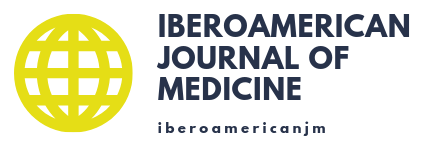Therapeutic Efficacy of Functional Task with Unilateral AFO and Knee Gaiter versus Bobath Intervention on Patients Gait Dysfunction in Stroke Population - A Comparative Study
Thangavelu Karthikeyan
Abstract
Introduction: Stroke is defined as sudden onset of focal neurological deficit lasting more than 24 hours duration. There are several complications derived from these illness, including neurological disorders like gait dysfunction. Attending to this problem, some treatments have been developed, including ankle foot orthosis (AFO), knee gaiter and bobath intervention. The aim of this study is to compare the efficacy of functional task in patients affected by stroke.
Material and Methods: Timed up and go (TUG) was the measurement evaluated. A total of 10 stroke patient were recruited for the study. 5 (Group A) received treatment with Functional Task Intervention with AFO knee gaiter). Group B (n=5) were treated with Bobath Intervention. The inclusion criteria were unilateral stroke with 3-6 months duration after onset, age limit 45-65 years and ability to comprehend the instructions for testing procedures. The exclusion criteria were bilateral stroke, mental dysfunction, non cooperative patients, cognitive and perceptual dysfunction, visual and auditory impairment and orthopedic disorders that impair ambulation.
Results: The pretest mean score of Group A was 30.18 and the post-test mean score was 13.08. On the other hand, group B patients obtained a pre-test mean score of 31.48 and the post-test mean score was 18.04.
Conclusion: The result of the present comparative study concluded that the functional task intervention with unilateral AFO and knee gaiter was more effective than Bobath intervention on stroke population.
Keywords
References
1. Warlow CP, Dennis MS. van Gijn J, Hankey GJ, Sandercock PAG, Bamford J, et al. A practical approach to management of stroke patients, in stroke: a practical guide to management. 2nd ed. London. Blackwell Sciences;2006.
2. Prasad K. Epidemiology of cerebrovascular disorders in India”. In recent concept in stroke. New Delhi. Bansal BC Indian college of physicians New Delhi;2019.
3. Hier DB, Eldstein G. Deriving clinical prediction rules from stroke outcome research. Stroke. 1991;22(11):1431-6. doi: 10.1161/01.str.22.11.1431.
4. Mayo NE, Korner-Bitensky N, Becker R, Georges P. Predicting falls among Patients in rehabilitation hospital. Am J Phys Med Rehabil. 1989;8:136-46. doi: 10.1097/00002060-198906000-00008.
5. Shumway-Cook A, Woollacott MH. Motor control. Theory and Practical Applications. 2nd ed. Philadelphia. Lippincott, Williams and Wilkins;2000.
6. Nyberg L, Gustafson Y. Using the Downton Index to predict those prone to falls in stroke rehabilitation. Stroke 1996;27:1821-4. doi: 10.1161/01.str.27.10.1821.
7. Rapport LJ, Webster JS. Predictors of falls among right hemisphere stroke patients in the rehabilitation setting. Arch Phys Med Rehabil 1993;74:621-6. doi: 10.1016/0003-9993(93)90160-c.
8. Mayo NE, Korner-Bitensky N, Kaizer F. Relationship between response time and falls among stroke patients undergoing physical rehabilitation. Int J Rehabil Res. 1990;13:47-55. doi: 10.1097/00004356-199003000-00005.
9. Robertson IH. Motor recovery after stroke depends on intact sustained attention: A 2-year follow-up study. Neuropsychology. 1997; 11:290-5. doi: 10.1037//0894-4105.11.2.290.
10. Stapleton T, Ashburn A, Stack E. A pilot study of attention deficits, balance control and falls in the sub acute stage following stroke. Clin Rehabil. 2001;15:437-44. doi: 10.1191/026921501678310243.
11. Bohannon RW. Gait performance of hemiparetic stroke patients: selected variables. Arch Phys Med Rehabil. 1987;68:777-81.
12. Liston RA, Brouwer BJ. Reliability and validity of measures obtained from stroke patients using the Balance Master. Arch Phys Med Rehabil. 1996;77:425-30. doi: 10.1016/s0003-9993(96)90028-3.
13. Nichols DS. Balance retraining after stroke using force platform biofeedback. Phys Ther. 1997;77:553-8. doi: 10.1093/ptj/77.5.553.
14. Sackley CM, Baguly BI. Visual feedback after stroke with balance performance monitor: two single case studies. Clin Rehabil. 1993;7:189-95. doi: https://doi.org/10.1177/026921559300700302.
15. Bohannon RW, Larkin PA. Lower extremity weight bearing under various standing conditions in independently ambulatory patients with hemiparesis. Phys There 2005;65:1323-5. doi: 10.1093/ptj/65.9.1323.
Submitted date:
02/04/2020
Reviewed date:
03/09/2020
Accepted date:
03/15/2020
Publication date:
03/15/2020

